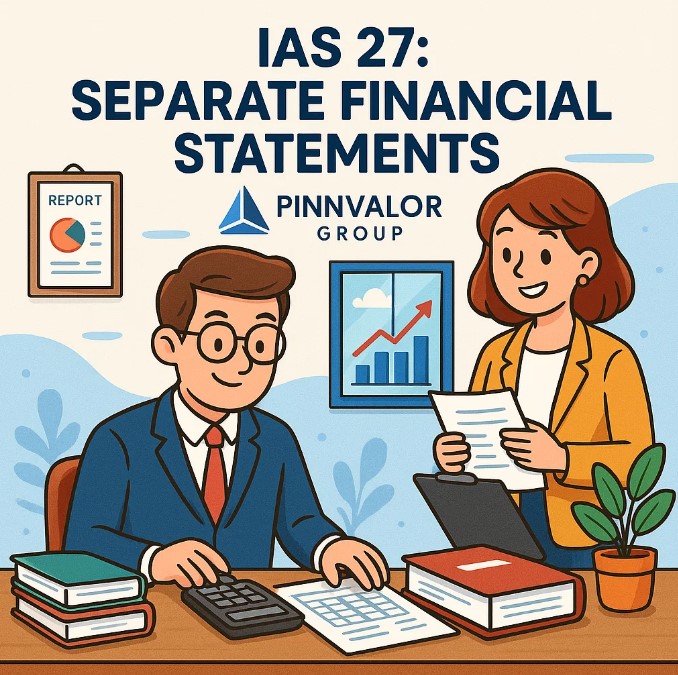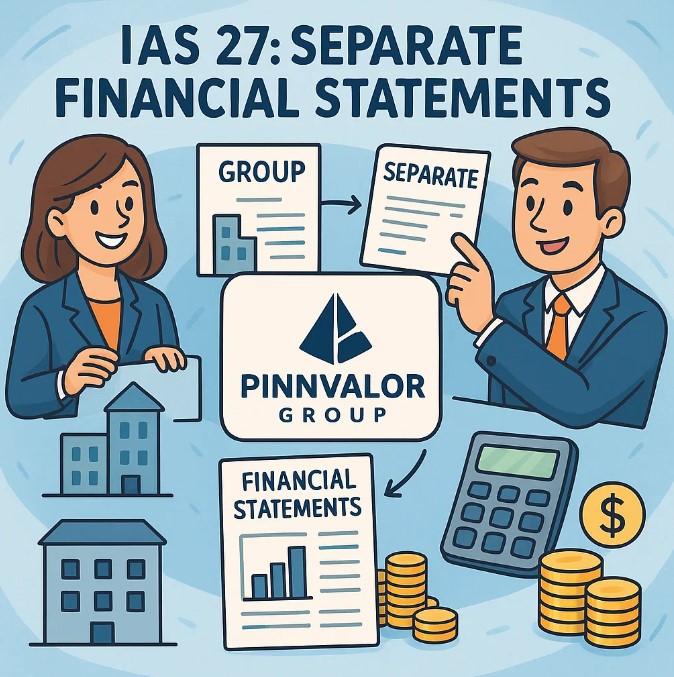
IAS 27: Separate Financial Statements
Understanding IAS 27: Separate Financial Statements – A Comprehensive Guide
In the world of financial reporting, International Accounting Standard (IAS) 27: Separate Financial Statements plays a crucial but often overlooked role. While consolidated financial statements tend to dominate the spotlight, separate financial statements are equally important for certain strategic, legal, or regulatory purposes. In this blog, we take a deep dive into IAS 27, exploring its objectives, scope, recognition principles, and relevance in today’s accounting landscape.
What do a parent company's true numbers look like—without consolidation?
In a world of group accounting, IAS 27 is your lens on the individual entity. Clarity, control, and compliance—all in one standard.
What Is IAS 27?
IAS 27 outlines the accounting and disclosure requirements for separate financial statements, which are financial reports presented by a parent or investor that chooses (or is required) to present investments in subsidiaries, joint ventures, and associates separately from consolidated financial statements.
IAS 27 works alongside IFRS 10 (Consolidated Financial Statements) but serves a different purpose.
Objective of IAS 27
The primary objective of IAS 27 is to prescribe how to account for investments in other entities in an entity’s separate financial statements. This standard ensures consistency and comparability in reporting such investments, whether for regulatory compliance, internal reporting, or legal filings.
Scope of IAS 27
IAS 27 applies to entities that prepare separate financial statements. This includes:
- Parent companies choosing to or required to present their own financials separately.
- Investors with significant influence or joint control, such as those involved in joint ventures or associates.
Note: IAS 27 does not apply to consolidated financial statements. For group-level financials, IFRS 10 is the relevant standard.
Key Definitions
Separate Financial Statements: Financial statements presented by a parent (or investor) in which investments in subsidiaries, joint ventures, or associates are accounted for either at:
- Cost
- In accordance with IFRS 9 (if classified as financial instruments)
- Equity method (optional, per the 2014 amendment)
Recognition and Measurement
In separate financial statements, an entity must choose one consistent method for each category of investments:
1. Cost Method
- Investments are carried at their original purchase cost.
- No fair value or equity method adjustments are made.
- Impairment testing applies.
2. IFRS 9 – Financial Instruments
- Investments are measured at fair value through profit or loss or other comprehensive income.
- Used when the investment is held for trading or involves contractual cash flows.
3. Equity Method (2014 Amendment)
- Equity method was reinstated as an optional accounting method in separate financial statements.
- Allows some alignment with how such investments are treated in consolidated financials.

Disclosure Requirements
Entities must disclose:
- The fact that the financial statements are separate financial statements.
- The accounting policies used for investments.
- A list of significant subsidiaries, joint ventures, and associates including:
- Name
- Principal place of business
- Ownership interest and voting rights
- Nature of the relationship
Comparison with IFRS 10 and IAS 28
| Standard | Focus | Measurement |
|---|---|---|
| IFRS 10 | Consolidated financial statements | Line-by-line consolidation |
| IAS 28 | Associates and joint ventures | Equity method |
| IAS 27 | Separate financial statements | Cost, IFRS 9, or equity method (optional) |
Why Are Separate Financial Statements Useful?
Separate financial statements offer advantages such as:
- Legal Requirements: Often required for regulatory filings or dividend declarations.
- Investor Clarity: Shows the parent entity’s performance in isolation.
- Banking and Lending: Useful for assessing creditworthiness of the parent alone.
- Simplification: Easier to interpret than consolidated accounts for certain stakeholders.
Practical Example
Company A has two subsidiaries. It prepares:
- Consolidated Financial Statements: Combines A, Sub1, and Sub2 under IFRS 10.
- Separate Financial Statements: Presents only Company A’s standalone results with Sub1 and Sub2 at cost or fair value (under IAS 27).
Recent Updates and Amendments
- 2014 Amendment: Reintroduced the equity method as a valid option.
- Continued interaction between IFRS 9 and IAS 27 influences measurement approaches.
Final Thoughts
While often overshadowed by consolidated reports, IAS 27: Separate Financial Statements serves a vital role in financial reporting. It provides a consistent framework for entities to present investments separately, ensuring clarity, legal compliance, and analytical insight. For accounting professionals and analysts, understanding IAS 27 is key to forming a complete picture of corporate financial health.
Further Reading
- IFRS 10: Consolidated Financial Statements
- IAS 28: Investments in Associates and Joint Ventures
- IFRS 9: Financial Instruments
- IFRS Foundation: www.ifrs.org
